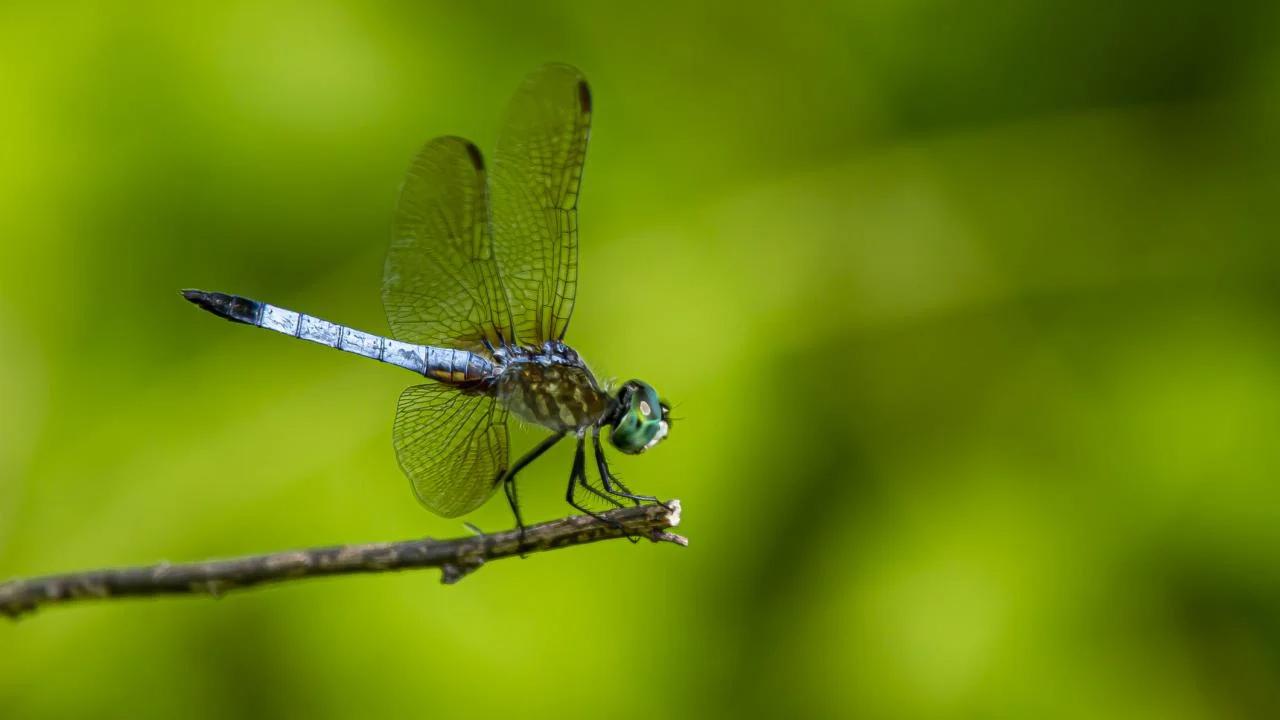
How Dragonflies Catch Prey in Midair
Despite their small size, dragonflies are arguably one of the most impressive predators in the animal kingdom. According to Rachel Crane, a biologist at the University of California Davis, dragonflies often catch up to 95% of the prey they go after, a rate she described as “wildly high compared to where most predators are.”
More incredible still, this prey capture all happens in midair.
“Dragonflies are doing these really, really fast, high-speed aerial captures,” said Crane.
This ability of dragonflies to successfully intercept airborne prey — a skill many human-designed robots have yet to master — is what drew Crane and her colleagues to study them. The scientists designed a novel method to test how dragonflies adjust to aerial challenges, like catching prey that speed up unpredictably or zig-zag through the air. Crane will present their study results at the January 2023 meeting of the Society for Integrative and Comparative Biology.
To study dragonfly flight, Crane’s team first designed a programmable pulley system that controls the movements of a bead on a string. Dragonflies are such voracious predators that they will readily attack most small objects flying through the air, even if the object is a tiny bead rather than a tasty fly. The bead’s velocity and acceleration can be set by the researchers simply by adjusting the controls, and the bead’s path can be changed by moving the string.
“You can make a circular track,” explained Crane, “but you can also pull that out of shape in any direction that you want, and all of a sudden, your bead is doing these really complex paths.”
The scientists tested out their new dragonfly playground using blue dashers, a dragonfly species common throughout much of North America. They started with a relatively simple task: fly the bead in a straight line at constant velocity and record the dragonfly’s attack with a high-speed camera. They ran this test repeatedly at different bead velocities to see how dragonflies adjust their own speed in response to that of their prey.

Crane’s team found that regardless of how fast or slow the bead went, the dragonflies always flew about exactly one meter per second faster than the bead. This speed-matching behavior is similar to what scientists had previously observed dragonflies do while hunting insects.
“We're seeing a similar thing with the beads that we would see with live prey, which is very exciting and reassuring,” said Crane.
The next step is to examine the dragonflies’ flight patterns in more challenging scenarios, like when prey suddenly speed up or slow down, or change directions unpredictably. These tests could help scientists understand what strategies are most useful for accurately intercepting flying objects.
“We can see where they're succeeding, how they're succeeding, and how they're failing,” said Crane, “and that can be helpful for 3D robotics challenges.”
Media Resources
- Adapted from a news release posted to Newswise by the Society for Integrative and Comparative Biology.
- Rachel Crane is a postdoctoral scholar working with Professor Stacey Combes, Department of Neurobiology, Physiology and Behavior
